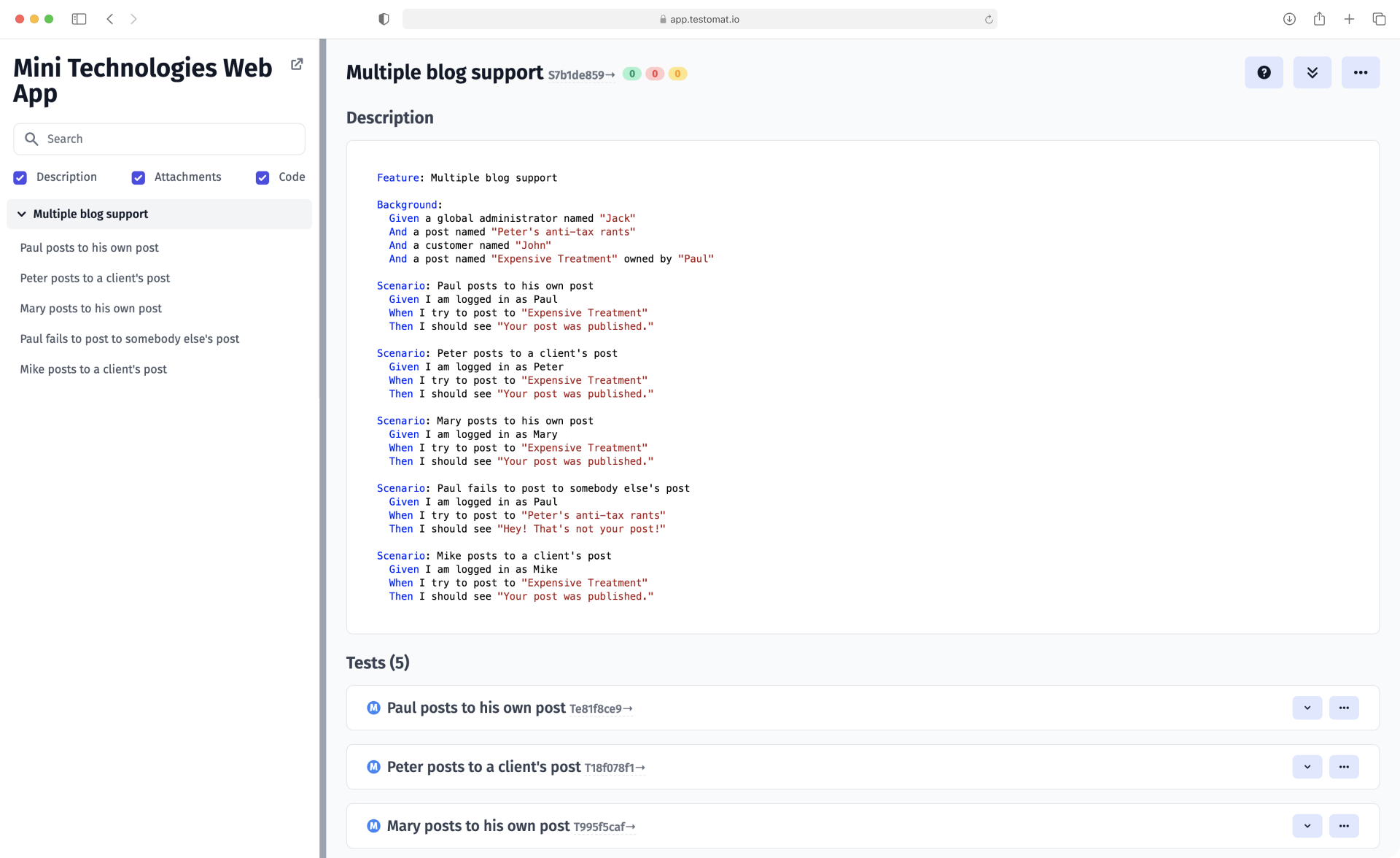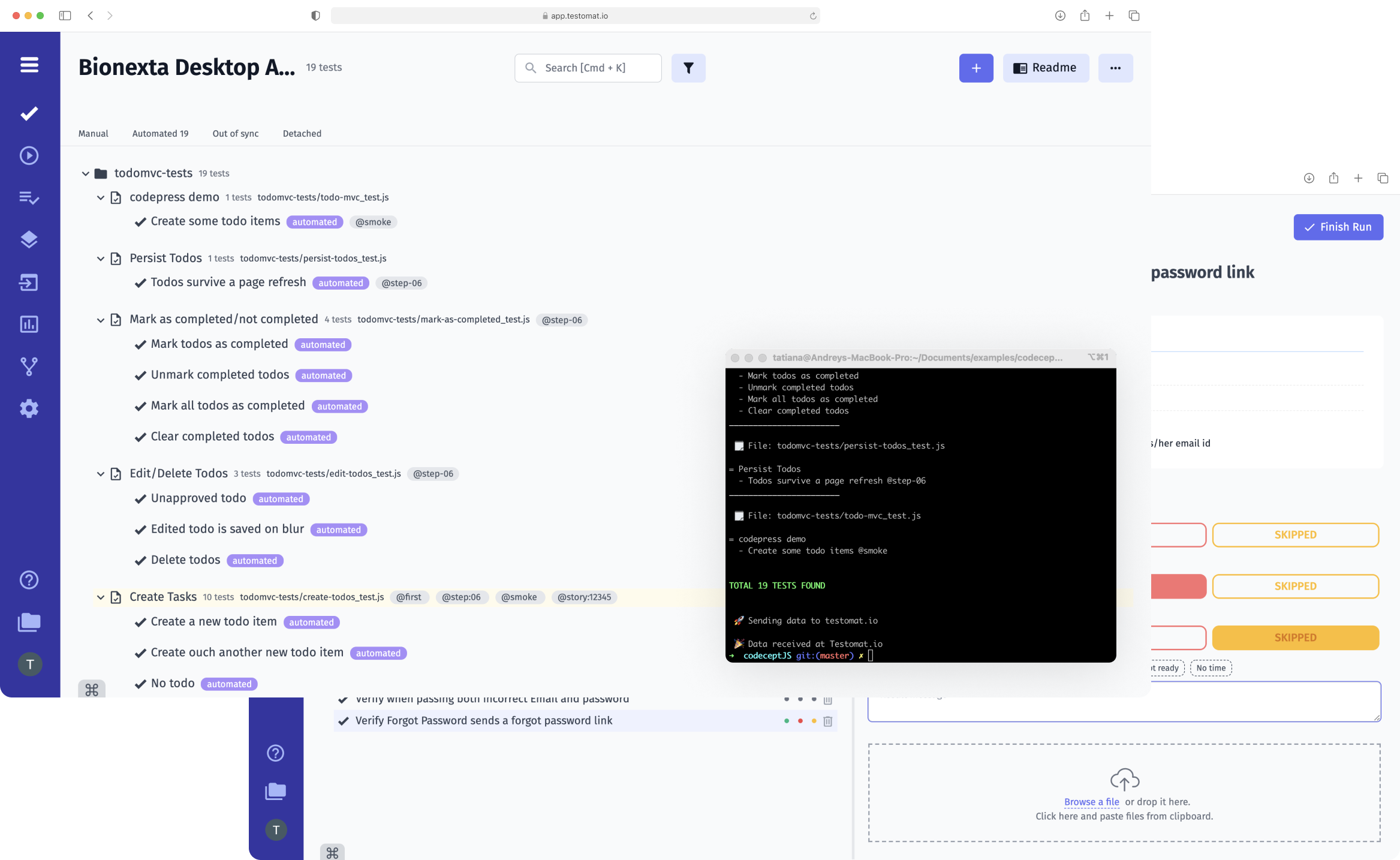
The testomat.io test management system widely supports BDD (Behavior-Driven Development) approach, along with automated and manual testing in one place. Development team is expanding new BDD functionality. Moreover, Living Documentation is a prime BDD feature.
What is Living Documentation?
Living documentation is a dynamic kind of technical documentation for software. Test cases are written in a way that tests serve as documentation. It is, in fact, a set of feature records verified and up to date via automation. Each feature file describes what the feature does and how it works.
Living documentation is written in the human-readable language, thus in a way that is easy to understand for business.
The key principles of living documentation:
- Actual
- Reliable
- Minimal work to produce
- Collaborative
- Insightful
Living Documentation is written collaboratively by many different actors. They all help to express the business needs in a way that can turned into automated acceptance tests.
Who commonly uses living documentation?
- Business analyst (BA)
- Developers (Dev)
- Testers (QA)
- Product owners (PO)
Living documentation and BDD approach
Living Documentation is a concept that has roots growing out of the BDD world. So, many QA Engineers associate Living Docs with BDD tests. Feature file in Gherkin language is the best for Living Documentation. Each test case is designed to confirm a specific piece of behavior.
You can make BDD scenarios visible to the whole team with Living Documentation. So Living Documentation becomes a single source of truth for everyone who works in your team, stakeholders, IT users or any others.
Test Management tool testomat.io has combined living documentation with several other features critical to the BDD process:
- Scenario editor that makes it easy to create scenarios on-the-fly without writing any code.
- Reusable step and snippets that concentrate test maintenance efforts in a single place.
- Support BDD testing frameworks, including Cucumber, CodeceptJS .
- CI/CD integration with Jenkins, Bamboo, CircleCI, Github actions ana Jira test management.
How does living documentation work with test management?
Thus, the test management solution testomat.io enables generating Living Documentation in BDD projects. You need just go to the project settings and switch the button of Enable Living Documentation. In addition, BDD projects can be imported out of such modern testing frameworks automatically:
- CodeceptJS
- Codeception
- Cucumber
- Cypress.io + BDD
- Webdriver.io-mocha
- Jest
Once you update the settings, you will receive a link, click on this link. And you will see documentation based on your test cases. You can open each of these scenarios and you can see details if you have some screenshots or text or any other.
This link can be sent to your stakeholders. You don`t need to have access to test management system to view these, the same work as in a public report. It is completely available without authorization. You can send these to your stakeholders and use them in their purpothes.
Even more, if you have a Confluence site. In a Confluence site you can use this link to insert Living Documentation. And in one side you will have a described test cases that link to a user story for other side you go to editor and you have a iframe. On this iframe side you can press update, copy paste from living documentation to the Jira iframe and then press on this iframe elements. Will be filled with a test case from the living documentation.
Living Documentation vs test report
Test reports naturally have a very strong testing focus. And test reports are produced by the QA team to finalize their testing efforts within STLC (Software Testing Life Cycle).
Test engineers are also the primary consumers of test reports. In many projects, other teammates will only ever see test report summaries or overviews.
Living Documentation is the source of truth for the whole team, not only for the QA team. Stakeholders can see a roadmap of what features are coming up and where existing features stand in the development process, while developers have a clear idea of what to do next.
Living documentation is often more exhaustive and detailed, unlike Test reports.
Benefits to create living documentation:
- Living documentation encourages collaboration and communication within the team.
- Can highlight anomalies. Hightlight features and their methods that don’t to be ever used
- Focuses on defining ‘behavior’ rather than defining ‘tests’
- Enhances communication among the members of a cross-functional product team
- Helps reach a wider audience by the usage of non-technical language
- Enables you to understand how the system should perform from the developer’s and customer’s perspective
Conclusion: Living Documentation is a great way to keep business and technical teams on the same page by maintaining an always up-to-date definition of application features 😉
In addition, everyone can be sure that they’re on the same page in regards to the business requirements.

